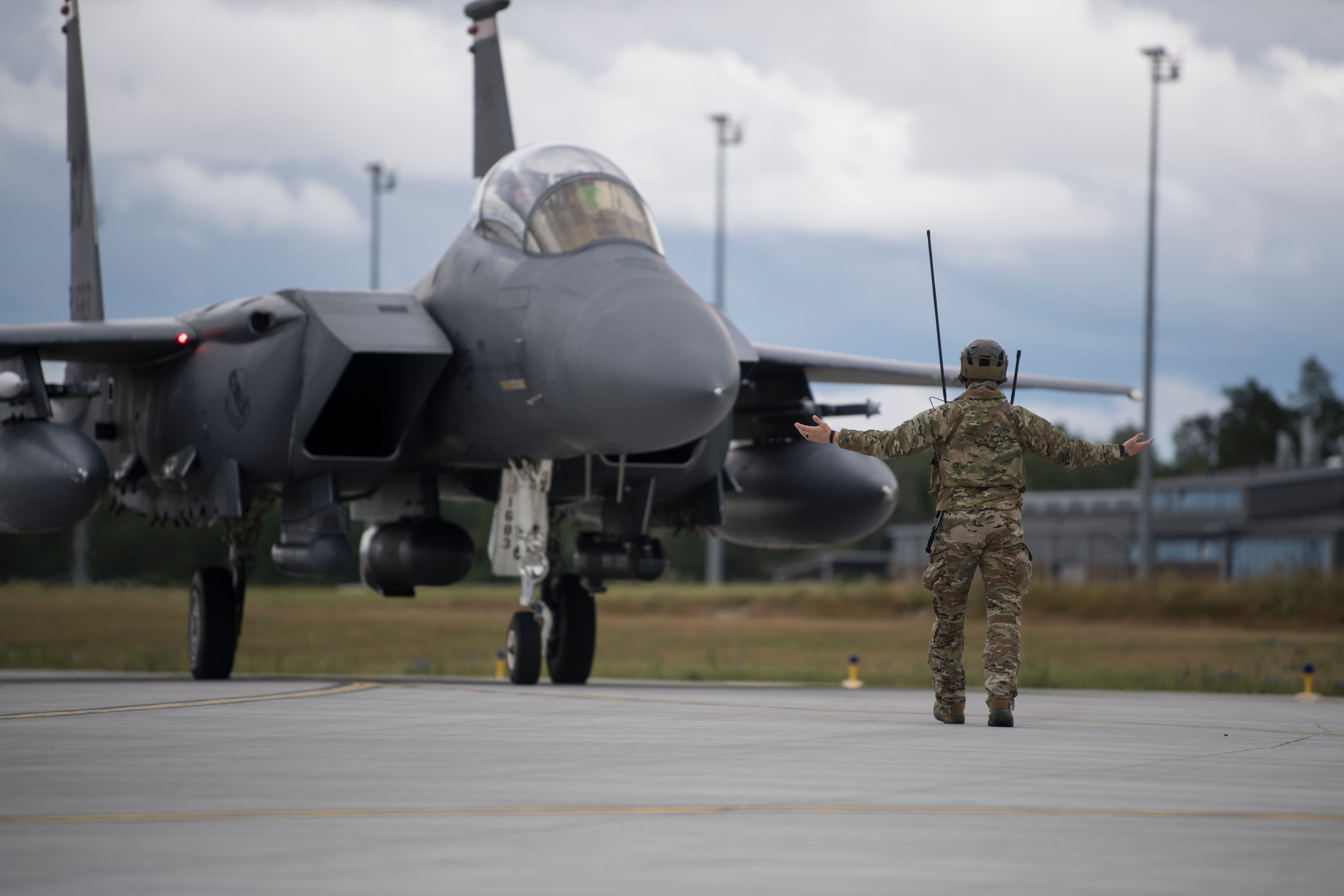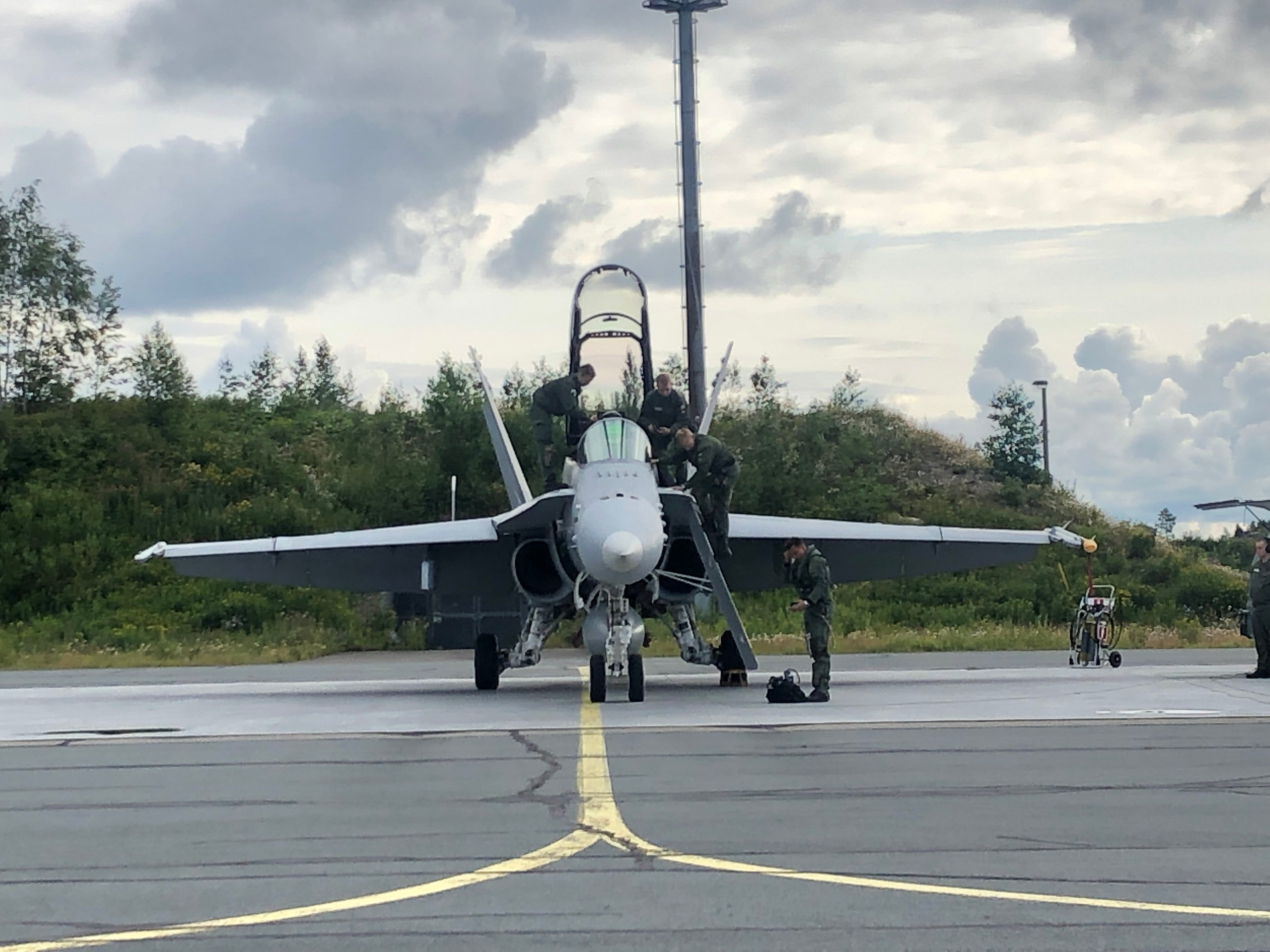AMARI AIR BASE, Estonia, and LONDON — The British Royal Air Force is noting an increase of air activity by Russia as the service conducts NATO’s Baltic air-policing mission this summer. However, pilots on the ground in Estonia report that the intercepts remain safe and professional.
Four Eurofighter Typhoons from the RAF’s 11 Squadron arrived at Amari Air Base on April 24 for the four-month NATO mission. Since then, the pace of operations has been high, said Air Chief Marshal Stephen Hillier, the RAF’s chief of the air staff.
“For anyone that had any doubt about the levels of activities we are facing, note that since arriving in Estonia … our Typhoons have already scrambled 13 times in response to Russian activity over the Baltic Sea — many more times than in the whole of our last deployment there in 2016,” he said July 17 during the Air and Space Power Conference in London.
RELATED

The latest RAF scramble occurred June 29, when two Typhoons were launched to intercept two Su-27 fighters and one Il-22 “Coot,” the nickname given to a Russian transport plane when configured as an aerial command post or reconnaissance asset.
“The event passed without incident,” said Squadron Leader Darren Scales, the media officer for the the 121st Expeditionary Air Wing, which is conducting the air-policing mission in Estonia.
The latest intercept follows back-to-back events June 14 and 15, when the Typhoons scrambled to intercept a Russian Su-30 fighter aircraft and later a Su-30 with an Il-76 transport aircraft.
“We’re doing, about average, three a week, which is about what we were expecting,” Wing Commander David Boreham, commanding officer of the 121st, told Defense News during the Amari Airshow.
Because the Baltic nations — Estonia, Latvia and Lithuania — have small air forces, NATO deploys fighter jets to the region to conduct routine air policing of those countries’ respective airspace.
The Typhoons conducting the Baltic air-policing mission are on “quick reaction alert,” or QRA, which requires a heightened state of readiness so jets can scramble “within minutes” of notification by an air operations center to launch, Boreham said.
“Then we will be vectored, told to fly to this location where the aircraft are, and then there’s a procedure for coming up alongside an aircraft,” he said. “We professionally and safely intercept that aircraft in a way that is understood by all parties. Then we will stay in a safe and comfortable position until that aircraft has left the region. There’s no aggression with it. It’s very professional on both sides.”
RELATED

Throughout the encounter, the Typhoons remain in contact with the Estonian air control facility on Amari Air Base, where Estonian personnel control the aircraft and pass on information to the air operations center.
The RAF Typhoons alternate Baltic air-policing duties with Spanish F/A-18 and Hungarian Gripen fighters based on Šiauliai Air Base in Lithuania. But during an “on week,” pilots remain on QRA, even if they have other engagements, as 121st did this weekend when it participated in the Amari Airshow, Boreham said.
Speaking to reporters July 17, U.S. Air Force Chief of Staff Gen. Dave Goldfein acknowledged a rise in Russian activity near the Baltic states, but said that all parties continue to abide by the basic rules of aerial engagement.
“What we’ve got to make sure that we don’t allow happen is for that professionalism to start degrading in any way, shape or form,” he said. “The good news is we’ve been doing this for Russian air forces for over 50 years, and I’m one that wants to make sure that we can continue to do this for the next 50 years because we hold ourselves to a high standard as two professional air forces. And I would say the same thing about the Chinese air force.”
Valerie Insinna is Defense News' air warfare reporter. She previously worked the Navy/congressional beats for Defense Daily, which followed almost three years as a staff writer for National Defense Magazine. Prior to that, she worked as an editorial assistant for the Tokyo Shimbun’s Washington bureau.








